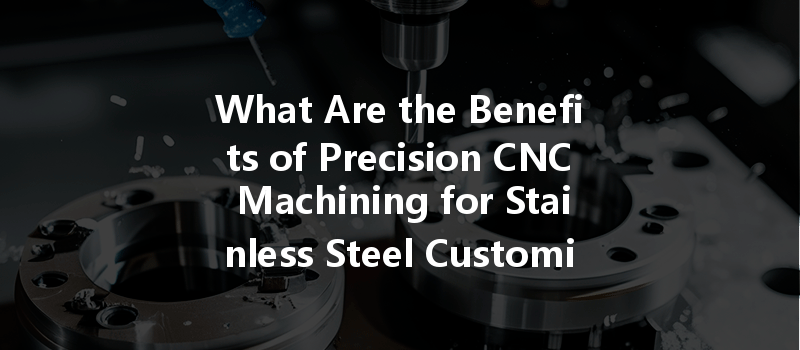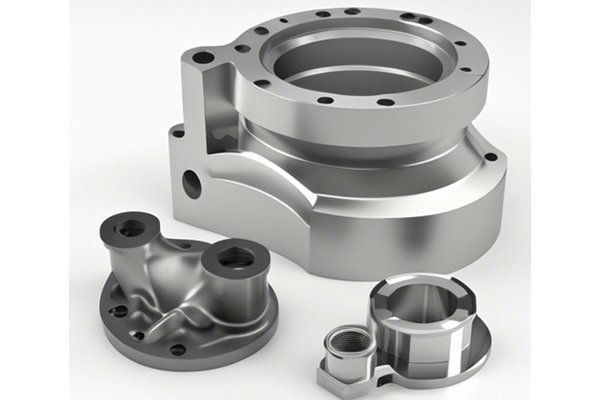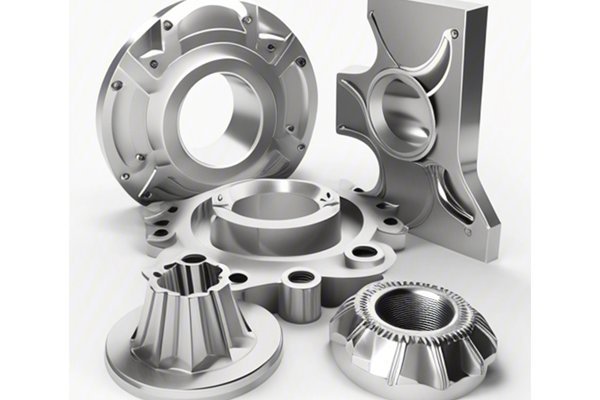Did you know that the global CNC machining market is projected to reach over $113 billion by 2026? This growth is largely fueled by industries that rely on precision components made from high-quality materials, including stainless steel. As manufacturers strive for efficiency, accuracy, and customization, CNC machining has emerged as a pivotal technology—especially for creating customized stainless steel parts.
In this comprehensive blog, we will dive into the manifold benefits offered by precision CNC machining for stainless steel customized parts. We’ll illuminate the problem areas where traditional manufacturing methods may falter and explore the myriad solutions CNC technology provides. By the end of this article, you will have a solid grasp of why precision CNC machining should be at the forefront of any manufacturing strategy focused on stainless steel components.
Understanding CNC Machining
What is CNC Machining?
CNC (Computer Numerical Control) machining is an automated manufacturing process that utilizes computer programs to control machine tools. Unlike conventional machining methods, CNC machining automates the process of production, allowing for consistent and accurate creations at scale. With CNC machines, manufacturers can create complex parts with tighter tolerances, which is critical for industries such as aerospace, medical devices, automotive, and more.
Why Stainless Steel?
Stainless steel is a popular material in manufacturing due to its corrosion resistance, strength, and aesthetic appeal. Used extensively in various industries, from kitchen appliances to aircraft parts, stainless steel’s durability and versatility make it an ideal choice for customized components.
The Benefits of Precision CNC Machining for Stainless Steel Customized Parts
One of the standout features of CNC machining is its ability to produce parts with exceptional accuracy. When manufacturing customized stainless steel components, minute specifications matter. CNC machines can achieve tolerances as tight as ±0.001 inches, which is nearly impossible with manual processes. This level of precision ensures that each part fits perfectly during assembly, reducing the risk of costly errors or reworks.
Traditional machining methods often limit customizations due to constraints in tooling and process setups. However, CNC machining allows for intricate designs and the ability to modify specifications quickly. Manufacturers can easily adapt designs in response to client requests or changes in project scope, which provides a significant competitive advantage.
Once a CNC program is established, the machine can produce hundreds or thousands of identical parts with uniform quality. This consistency is vital in industries where even minor variations can create performance issues or safety concerns. By using CNC machining for stainless steel parts, manufacturers can ensure that each component meets the required standards.
CNC machining is known for its efficiency regarding material usage. Subtractive manufacturing methods, like CNC machining, often produce less waste compared to traditional fabrication techniques. As CNC machines cut only the necessary material, this translates to lower production costs and can significantly affect a manufacturer’s profit margins.
The advent of CNC technology has revolutionized the capabilities of manufacturers to create complex geometries. From intricate patterns to complicated assemblies, stainless steel parts can be designed with an astounding level of detail. Whether you are producing a custom automotive component or a specialized medical device, CNC machining is equipped to meet these complex challenges.
With the combination of automation and efficient processes, CNC machining can dramatically decrease lead times. This ability is invaluable in industries that demand rapid prototyping or quick-turnaround times for customized parts. Customers can receive their parts faster, allowing for a more agile manufacturing strategy.
CNC machining can be integrated with other modern technologies, such as additive manufacturing or 3D printing, to create hybrid manufacturing solutions. This adaptability can enhance design functionality and improve overall production capabilities for customized stainless steel parts.
The automation of CNC machining reduces the risk associated with manual machining processes, such as operator errors or accidents. Additionally, CNC machines are equipped with various safety features that help protect workers and ensure safer operational environments.
Addressing Challenges in CNC Machining
While CNC machining offers several benefits, it is not without its challenges. Below are some potential issues manufacturers may encounter—and the corresponding solutions.
Challenge: High Initial Costs
While CNC machining can save money over time, the initial investment can be significant.
Solution: Many manufacturers opt for CNC machining service providers, where they can outsource their machining needs without incurring full capital expenses. This approach allows smaller businesses to compete while maintaining quality.
Challenge: Required Expertise
CNC machining requires a skilled workforce familiar with operating and programming the machines.
Solution: Investing in staff training and continuous education will equip teams with the necessary skills. Alternatively, partnering with experienced consultants or training organizations can expedite ramp-up times.

Challenge: Software Complexity
CNC machines often operate under complex software that can pose a steep learning curve.
Solution: Many CNC machine manufacturers offer support and training packages. Investing time in learning software can enhance efficiency and unlock the full potential of the machines.
The CNC Machining Process for Stainless Steel Parts
Step 1: Designing the Part
Every customized stainless steel part begins with a precise design, often created in CAD (Computer-Aided Design) software. This design must account for measurements, tolerances, and any additional specifications needed for the part’s intended application.
Step 2: Programming the CNC Machine
Once the design is complete, programmers convert the CAD file into a CNC-compatible format using CAM (Computer-Aided Manufacturing) software. This program dictates how the CNC machine will move, speed, tools to use, and more.
Step 3: Setting Up the Machine
Before production begins, the CNC machine operator sets up the machine by securing the stainless steel material, loading tools, and verifying the program.
Step 4: Machining the Part
With all preparations complete, the CNC machine begins creating the part by removing material based on the programmed specifications. This process could involve various methods, including milling, turning, or drilling.
Step 5: Quality Assurance
Once the part is machined, thorough inspections are conducted to ensure it meets quality standards. This may involve measuring tolerances, visual inspections, and functional testing.
Step 6: Finishing Touches
Depending on the requirements, the part may undergo additional finishing processes, such as polishing, anodizing, or coating, to enhance its performance properties or aesthetic appeal.
Step 7: Delivery
Finally, the customized stainless steel parts are packaged and delivered to the client. Efficient logistics help ensure timely arrival at the client’s facility.
Real-World Applications of Precision CNC Machining
Aerospace Industry
In the aerospace sector, CNC machining plays a crucial role in creating components that require strict adherence to safety and regulatory standards. Complex parts such as engine mounts and fittings can be produced with high precision from stainless steel, ensuring durability and reliability.
Medical Devices
The medical field demands high precision and reliability, especially when it comes to surgical instruments and implantable devices. CNC-machined stainless steel parts can meet these stringent requirements while being crafted according to specific dimensions.
Automotive Manufacturing
The automotive industry benefits from CNC machining’s ability to produce components at scale while maintaining the flexibility needed for customization. Stainless steel parts within engines, frames, and decorative items can be tailored for performance and visual appeal.
Marine Applications
In marine environments, stainless steel is a preferred choice due to its corrosion resistance. CNC machining allows for the precise manufacturing of parts for boats and ships, enhancing durability and performance.
Precision CNC machining for stainless steel customized parts brings a myriad of benefits, addressing many challenges faced in traditional manufacturing. High precision, customization flexibility, and reduced waste are just a few of the advantages that make CNC technology integral to a modern manufacturing strategy.
This blog has walked you through the mechanics of CNC machining, its core benefits, potential challenges, and the critical steps in the production process. The implications of adopting CNC machining extend beyond cost savings; they can lead to improved competitiveness in an increasingly global market.
As industries continue to advance and consumer demands evolve, manufacturers must consider integrating precision CNC machining for stainless steel customized parts into their operations. Not only does it promise higher quality and efficiency, but it also unlocks the potential for innovation in design and application.
Ultimately, this consideration is not just a matter of keeping pace; it’s about leading in an age where precision and reliability are paramount. Embracing CNC machining could well be the key to shaping the future of manufacturing.






